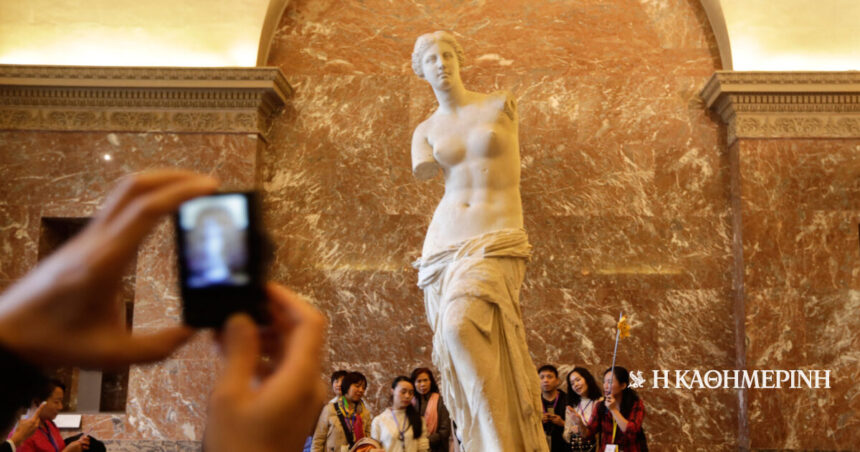On April 8, 1820, one of its most famous statues came to light antiquity: Aphrodite of Milos. The masterpiece sculpture, a wonderful example of Hellenistic art, was accidentally discovered by the farmer George Kentrota Near the ruins of an ancient theater, in the village of Klima. The statue was found in two main sections, with its elegance and technique betraying the excellent quality of Greek sculpture. In addition, parts of its base were identified and an inscription, which helped to dating it.
At that time, the Apple It was under Ottoman rule and the interest of foreigners in antiquities was particularly intense. The French officer Olivierwhich happened to be on the island, immediately understood the value of the find and informed the French consul in Smyrna, who made sure to secure the statue on her behalf. France. Despite the reactions of other stakeholders, the French managed to acquire the statue and transport it to France.
The acquisition, however, was not without controversy. According to testimonies, during the transfer process, Greek residents of Milos, along with Ottoman officials, attempted to prevent him from loading the French ship. Noted intense quarrel in the portas the locals realized that such a valuable part of their cultural heritage was to be lost. The tension peaked, with Reports for physical conflict between the parties involved. Eventually, the French, with the help of the Ottomans, managed to take the statue and send it to France. In May 1820, the statue offered to King Ludovico II and then transferred to Louvre museumwhere it is exposed to this day.
The most characteristic feature of Aphrodite of Milos is the absence of her hands.
The sculpture dates back to about 150-125 BC. and attributed to the sculptor Alexander of Antiochaccording to the inscription found near its base. It is made of Parian marble and is 2.04 meters high. Although it is fragmented, posture, balance and detail in the performance of garments and anatomy are adorable.
The most characteristic of Aphrodite of Milos is The absence of her handswhich has led to various cases regarding its original attitude and the object it could hold. Some scholars argue that he was holding an apple, in reference to the legend of Eridas and Paris, while other theories suggest that he could hold a mirror or even a shield if he represented the goddess of victory. There is also evidence that Initially the statue brought metal jewelrywhich were lost over time.
Requests have been made to Greece.
Aphrodite of Milos is a one of the most recognizable and multi -photographed exhibits of the Louvre, attracting millions of visitors each year. Her transfer to France, however, is still a point of confrontation. As is the case with many other archaeological finds that were removed from their place of origin during the period of colonialism and Ottoman rule, so did Aphrodite of Milos, requests for its return to Greece.
Despite repeated Greek calls, the French government and the Louvre Museum have not shown a willingness to consider returning. The Aphrodite case of Milos is part of a broader discussion on the fate of Greek antiquities in foreign museums, along with requests such as the return of Parthenon sculpture from the British Museum. However, Aphrodite of Milos remains an integral part of the Greek cultural heritage.
Column: Myrto Katsigera, Vassilis Minakakis, Antigoni-Despina Poumenidou, Athanasios Syroplakis







